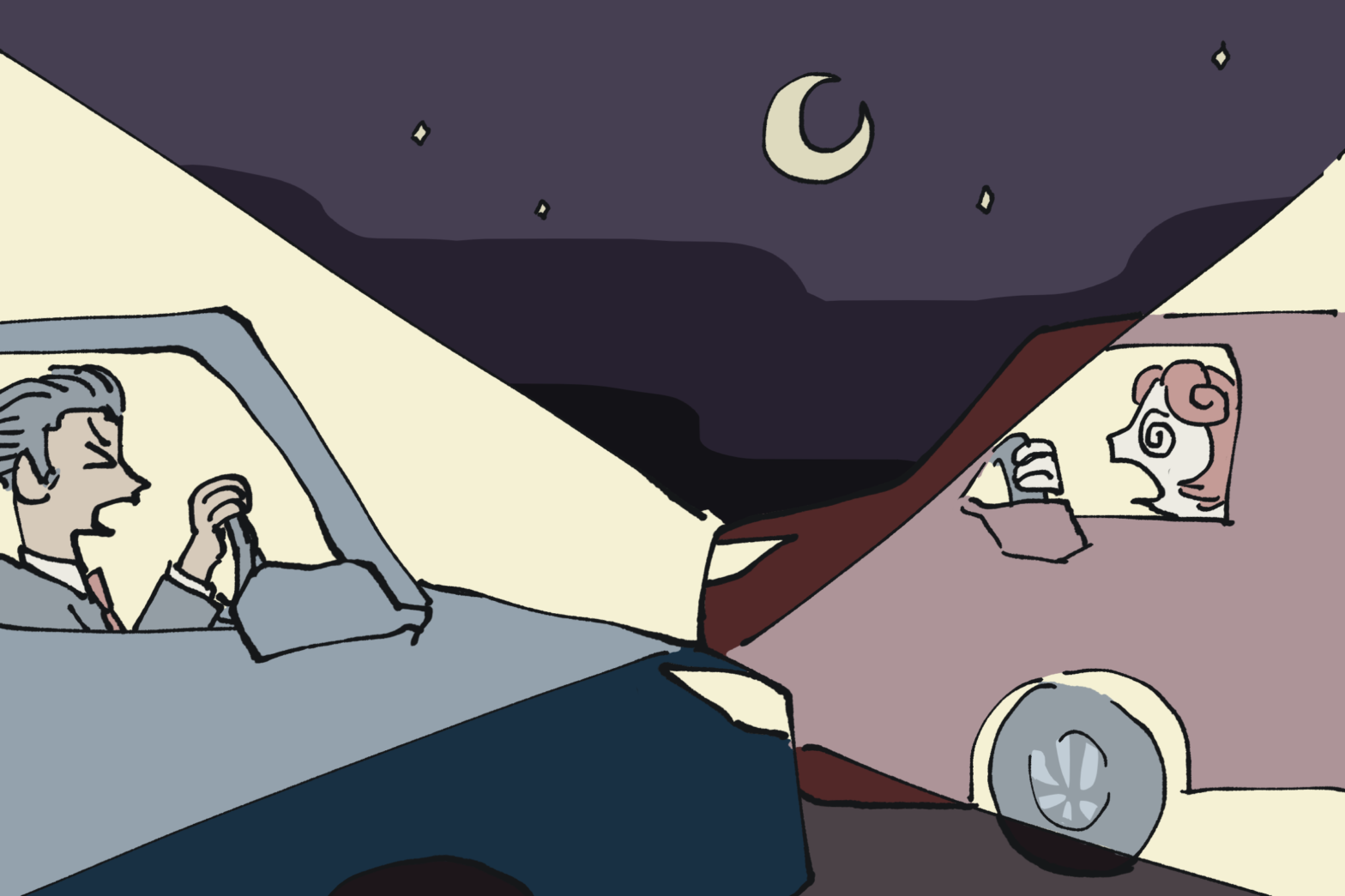If you've driven at night in the last few years, you've probably noticed an alarming trend: Car headlights have become too bright. As a commuter, driving in the dark is practically unavoidable. In the winter, the sun doesn't rise until after 8 a.m., when I'm usually out and about, and sets around 5:20 p.m., well before I head home. Since there are few to no street lights on my drive, the only sources of light are often the moon and car headlights.
And yet I am often blinded by the headlights or have to strain my eyes to see the road. The lights that were supposed to improve our visibility while driving and create safer driving conditions have lost their true purpose. Instead of illuminating the road, headlights now blind the driver on the opposite side.
Due to changes in the type and size of lights used, car headlights are becoming increasingly brighter. In 2010, car manufacturers began using LED lights as they became increasingly popular and were seen as modern. You can recognize LED headlights by their bright white-blue light compared to the softer, yellow lights previously used.
LED lights are ideal for generating light and illuminating areas. However, these lights also have significant blue light emissions. Because of its high frequency, blue light can penetrate the retina, and excessive exposure has been linked to eye strain and possible retinal damage. Typical blue light overexposure occurs with any device you use regularly. Even if occasional staring into headlights doesn't cause immediate harm, exposure to multiple sources adds up over time and can lead to permanent retinal damage.
The problem with headlights is not just the type of light used, but also the size of the light. The headlights have become smaller over the years, making the lights appear to have a brighter intensity. When light is emitted from a smaller source, it is more concentrated and therefore more intense. So if you're driving and you see a headlight, it may not appear bright until you see it from a certain angle. Sometimes this happens when there is a car behind you and you are blinded in the rearview mirror as it approaches. This is extremely dangerous as accidents can occur if you are blinded in traffic.
Several different groups are trying to address this problem. The Soft Lights Foundation is pushing for a ban on these headlights and has circulated a petition with more than 68,000 signatures. Thousands of people agree that these headlights have become a dangerous problem for drivers.
However, there is no denying that brighter headlights do have advantages. Because the LED lights are more powerful than the soft yellow lights previously used, they increase visibility on dark, nighttime streets. The lighting itself isn't the only problem. The placement and size of the lights has contributed to the problems we are having due to their glare.
A more practical solution to the problem would be to introduce more secure protocols that are recognized worldwide. Several European vehicles use advanced headlight technology that continually adjusts their high beams to improve visibility without causing glare. These adaptive systems also have the technology to dim the lights and change the beam pattern when another vehicle is detected to prevent blinding other drivers. Advanced headlights should be the new standard for American vehicles. They are proven to provide safer driving conditions in Europe and have the potential to now solve problems related to our headlights.
Another solution we should consider is increasing the number of street lights in the United States. If you've walked around Ann Arbor at night, especially in residential areas and away from the hustle and bustle of the city, you may have noticed the lack of street lights. While this is not a problem for many students on campus due to the lights around university buildings, it is an issue off campus. Even in my neighborhood, 20 minutes from campus, there are no street lights.
Some may fear that the increasing number of streetlights will lead to higher energy consumption and increased light pollution from streetlights. There are eco-friendly options like solar-powered street lights that communities can benefit from without having to pay a high price for their operation.
Ann Arbor recently completed the LED Street Light Conversion Project, which aims to convert DTE street lights from high pressure sodium lamps to LED fixtures. These lights are more environmentally friendly and economical for the city as they reduce emissions and costs. Grand Rapids has a similar project upgrading and installing LED streetlights with smart lighting nodes. This results in lower service and maintenance costs as the lights can be dimmed and run on less electricity, extending their lifespan and reducing energy consumption.
Increasing the number of street lights in areas with high vehicle traffic limits the need for high-power lights and the high beams sometimes used by motorists. That's not the only benefit that comes with an increase in streetlights. A 2007 U.S. Department of Justice study found that improved street lighting was associated with a 21% decrease in crime.
There must be regulations on car headlights as they pose a serious danger to drivers if left unchecked. Solving this problem requires a direct approach, but can also be found in how we make our communities shine. As our country builds more and more roads, it shouldn't be every driver's personal responsibility to light them. Although some of our Michigan cities take top spots in the “Worst Drivers in America” category, I can assure you that it is definitely not our fault. It's those annoying, blinding headlights.
Lara Tinawi is an opinion columnist who writes about campus culture and her everyday thoughts in her Daily Dose column. She can be reached at ltinawi@umich.edu.
